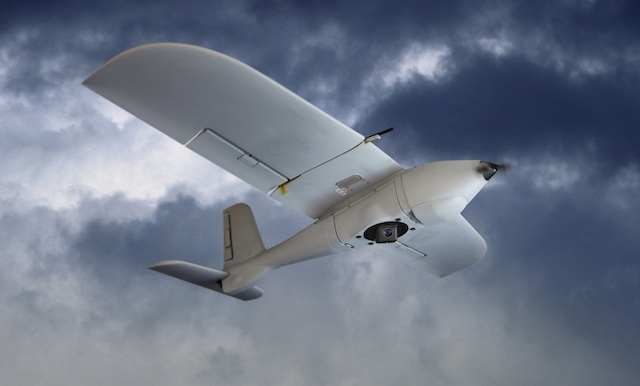Lockheed Martin has completed a series of upgrades on its Desert Hawk unmanned air vehicle (UAV), increasing endurance and future-proofing the system for the integration of additional capabilities.
It says a new “all environment smart battery” will grow the endurance of Desert Hawk III, its latest iteration, from 2h to 2.5h.
The aircraft uses the same battery “smart chips” employed in the automotive industry and will allow Desert Hawk to draw power from a mix of rechargeable lithium-polymer and lithium-sulfur batteries, disposable nickel-cadmium batteries and from solar cells, says Lockheed.
The system can also use power generated from solar cells to recharge the onboard batteries, says Lockheed.
In addition, the company has added a new propulsion system with three to four times more thrust and made changes to Desert Hawk’s fuselage and nose, says Steve Fortson, Lockheed’s business development manager for unmanned solutions.
Those improvements allow Desert Hawk to perform “deep stall landings”, which reduce the space required, Fortson says.
In addition, thrust improvements allow users to toss the aircraft into flight from a standstill - so-called “stand and toss” - says Fortson.

Lockheed
Desert Hawk III also has digital, not analog, video streaming, which means users will have more bands in the radio spectrum through which to broadcast, says Fortson, allowing better data encryption and data transmission via 3G and 4G mobile telecommunications networks.
Desert Hawk III also has an upgraded mission processor that will allow the aircraft to be integrated with different payloads, Fortson says. “We are leveraging open architecture [technology] to develop Desert Hawk so that it’s versatile, configurable and affordable,” he says.
The rucksack-portable, sub-8lb (3.6kg)Desert Hawk III can be piloted with Lockheed’s mobile ground control station (mGCS).
Since 2006, Desert Hawk, which carries both color cameras and electro-optical and infrared sensors, has been used by the British army for aerial reconnaissance, surveillance and situational awareness tasks.
Source: FlightGlobal.com






















